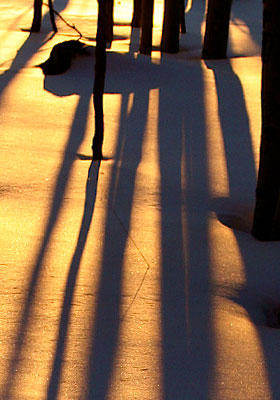Archive for the ‘inner landscape’ Category
Friday, May 3rd, 2013
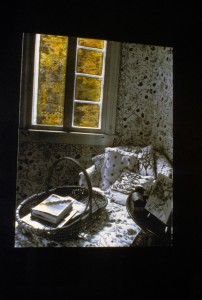
In my 30’s I began to photograph in earnest. Now that was back in the ‘70’s, so picture me stepping out in a safari-like photographer’s vest and smoking brown More cigarettes. (The More bohemian and rebellious, the better.)
I set out to explore the other side of the tracks. Mind you, I was raised in San Marino, CA, bastion at that time of white privilege, the John Birch Society (sorry if some of these references are too representative of another generation) and suspicion of “others not like us.”
I feel shame as I write this, but it’s my history.
I had lived in NYC and taught public school there for three years, so I was well “over” San Marino. But now in my adult, parental state (and back in the state of CA) I had only moved four miles away, into South Pasadena. Lawns still looked green, houses gentrified, and attitudes were changing slowly. I was in the mood for a rebellion.
I went north, into the “ghetto” of Pasadena at that time, an area full of lovely old Victorians neglected because of poverty and segregation. My camera was my passport. And architecture was my proof that I was documenting unappreciated treasures. I gained entrance into a new neighborhood and a new form of education.
What was valuable about “the old architecture” in society and in my own being that had been neglected? And what needed tearing down and renovating? What was family about? What if all the races lived together and formed one? I photographed these questions.
It was a time of great opening for me. My Victorian grandmother had passed on, and so had her way of life and viewing the world, graceful as it was. My parents appeared confused: pleased to offer me two lamb chops for dinner at the mahogany dining room table, and willing to work hard for my excellent education…yet mired in the ‘50’s view of life. I was just now trying to emerge from it.
The photograph you see is just one of the many photographs I took during that period. I had a show at a hip Pasadena gallery, showcasing several years of 35mm architectural photography. I considered it a tribute to a history that was passing, evolving.
I chose to show you this photograph because I took it in a beautiful old Pasadena classic house that I admired. On the chaise, upholstered in the perfect fabric for that period, lay a book that had been seminal for me: Gail Sheehy’s Passages. After all, I was in one.
Out the window lay some other land, one that was natural and still impressionistic and undefined for me—but one that was beckoning me. So I colored it with Marshall’s Oils, to represent new life. The path ahead.
What is your ‘old world’ now that you wish to honor as it passes and evolves? What would you photograph to represent it? And how does the new one look? What will be your passageway into that new way of seeing, that new life?
Tags: consciousness, creativity and empowerment, Gail Sheehy, managing change, Passages, perception, Photography, transitions
Posted in conscious evolution, Creativity, creativity and empowerment, death and new life, inner landscape, managing change, Photography, seeing oneself, self-healing, shifting how we see, shifting paradigms, Tools for seeing ourselves | 7 Comments »
Tuesday, March 12th, 2013
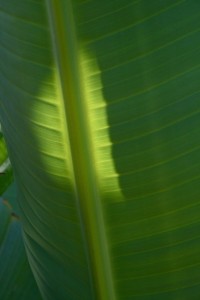
Most people approach photography in a documentary way photographing an event, a person or an object in order to remember it, or to say, “This is how it is.” We tell a story of what we see. But another way to approach photography is through the question, “What have I not seen?”
Now we’re on a treasure hunt! And rather than thinking of “shooting” something with the camera (or phone,) we might think of opening the lens to something new. Just writing that opens my heart to the possibility of a magic moment where I might discover…anything.
Instead of “capturing” a moment, I’m willing to be more passive and let something new present itself to me. It’s the difference between a reporter covering an event and two friends of lovers having an intimate conversation. I’m open today to having a heart-to-heart with the Creation.
This kind of experience opens our inner eye. We find that what was formerly unseen was there all along, but we weren’t seeing it. Maybe we weren’t slowing down enough. Or maybe we weren’t broadening our vision. Or getting close enough. Or maybe we were being too literal and saying to ourselves, “There’s a leaf.” Instead of looking at that object as a way for us to see how light acts.
And what happens when our inner eye is opened? Well, my experience is usually gratitude. Appreciation. That wonderful expansive feeling that comes from being opened to the beauty of something or someone.
So here’s an assignment for you:
Go out for a medicine walk using your camera. The kind of camera makes no difference. Set your intention by asking the Universe to reveal to you something you haven’t seen before. It could be small–like the inside of a flower or a curve of the mountain, or the way your friend’s nose looks when she laughs. You aren’t after masterpieces; the purpose is to open your inner eye.
Share what you find–others would like to see! And tell us how your inner eye opened. That is, when you saw what you saw, what did you see about yourself, or the world, or a way you could be? You can post photos at Facebook.com/PamelaHale9.
Tags: consciousness, creative imagination, creativity and empowerment, inner landscape, Nature and the soul, perception, Photography, The Beauty Way
Posted in Creativity, creativity and empowerment, inner landscape, nature as mirror, Photography, seeing oneself, shifting how we see, shifting paradigms, spiritual practices, The Beauty Path, Tools for seeing ourselves | No Comments »
Monday, February 4th, 2013
The second process I’ll use to explore what my wild heart desires is photography. I went on a walk in Catalina State Park, which is a treasure right next to my house. (I know, my wild heart is already grateful.) I took some photos—not thinking too much about why, except I was attracted to that scene—and now I’ll dialogue with them.

Seeing the great Catalinas, touched by the setting sun, I remember that my wild heart’s desire is always to live near beauty, with beauty surrounding me, and to be on the Beauty Path. That is, if for some reason I find myself in a place that doesn’t seem beautiful, I will find beauty there, or create it. Thank you for reminding me of how much I love beauty.
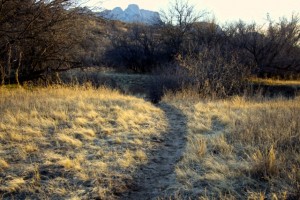
I am reminded that I am always looking for my path. That the exploration–the finding and following my path–is a lovely adventure in itself. My wild heart loves that exploration and isn’t nearly as attached to the destination or the end result as my mind and my ego. Another good reminder!

This scene reminds me that reflections–even in an ordinary rain puddle–can be lovely. The way nature is reflected is a treasure, if we just remember to look. My wild heart loves to find lovely reflections, both in nature and in my own inner landscape. She loves the process of taking time, of looking and remembering to remember. She wants me to always allow time for this.
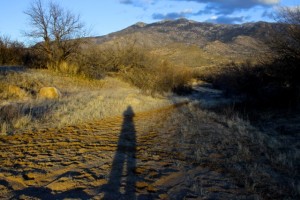
Finally, I stop and see myself–my shadow–in the landscape. What does this show about my wild heart? The photo tells me that my mind and ego tend to think my shadow–the parts of me that aren’t visible to me in “normal life”–show up in natural ways in order to be recognized and accepted. That means the parts of me that aren’t so nice and pretty are going to show up in my outer life through my relationships, and they’ll also show up in my inner landscape. And that is a good thing. My wild heart doesn’t care if I have imperfections. She’s all about discovery, exploration, venturing into uncharted territory. She says we can all have wonderful discoveries when our shadow shows up. Sometimes these involve healing old wounds and other times they involve seeing and recognizing our gifts.
What do these four photographs say to you about your own wild heart? I invite your comments!
Tags: beauty, consciousness, creative imagination, creativity and empowerment, inner landscape, Nature and the soul, perception, Photography, The Beauty Way
Posted in bringing out your gifts, consciousness, Gaia, happiness, healing, Imagination, inner landscape, loving ourselves, nature as mirror, Photography, seeing oneself, shifting how we see, spiritual practices, The Beauty Path, Tools for seeing ourselves | 4 Comments »
Wednesday, January 30th, 2013
This is the first of a series of blogs where I’m going to share some techniques I’ve developed for looking deeply within, using the lens of our creative inner eye. I’ll pose a question that I want to explore and share with you, and then present that question using several different processes.
The first question is, what does my wild heart desire? By my wild heart, I mean the part of my heart that has not been domesticated or tamed by others, by my own traumas and wounds or by the wounds and expectations of the culture. This heart has not been conquered; it is indigenous, in close relationship with the earth and nature and the heavens. It is wild.
The first process is to use the core concept developed by The Painting Experience (processarts.com) to make a painting by feel. That is, I pose the question before a blank paper and my palette, which only has the primary colors, for simplicity. I clear my mind of thoughts as much as possible.
What color wants to go onto the paper? First, it is blue. So I paint blue wherever it wants to go on the paper until that feels finished. Next, I want to make a green of different strengths, so I mix my blue with some yellow and paint until the energy for expressing green quiets. Now I want a bit of red, and then a lot of yellow. And then I feel finished. This painting only takes me minutes, though I have done many that become more complex.
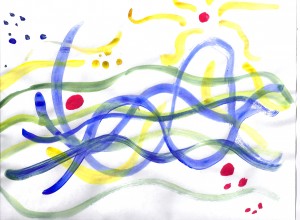
Now I leave the Painting Experience behind, because they do not analyze or name part of the painting. I will involve my left brain and my right to see what message or information I can get from my painting.
What does the blue feel like? And how does the feeling relate to a part of me?
Blue feels like my beloved ocean, like waves, like the part of me that is fluid, flexible, deep, clear and free.
And the green?
Like rolling hills, a beautifully carpeted, lush surface on Mother Earth that supports all life here. The part of me that is both solid, grounded, earthy, and graceful.
The red is like drops of blood, like the life blood that is both from wounds and passion that punctuates and sustains life here on earth.
The yellow is sunlight, the energy of warmth that sustains life and moves through every part of it. My wild heart wants a warm, lively connection with me and with my journey.
Feeling into the painting, is there more I want to add?
I want to finish with some blue dots in the upper left hand corner that feel like stars, a portal into the unknown Universe of which I am a part.
And so I ask the painting as a whole: What does my wild heart desire?
My wild heart wants freedom, flow, beauty, pulsating life, a connection to the sun and stars and to water and ground—to All That Is. Including a warm, lively connection with me and my journey!
And so what if I made those qualities of experience the benchmarks for success? What if success in my life were to mean pleasing my one wild heart? Hmmm.
And what would that mean for you? I look forward to your comments!
Tags: beauty, consciousness, creative imagination, creativity and empowerment, inner landscape, perception, spiritual practice
Posted in bringing out your gifts, creative imagination, Creativity, creativity and empowerment, Guided imagery, healing, Imagination, inner landscape, seeing oneself, self-healing, shifting how we see, shifting paradigms, Tools for seeing ourselves, Uncategorized | No Comments »
Wednesday, October 31st, 2012
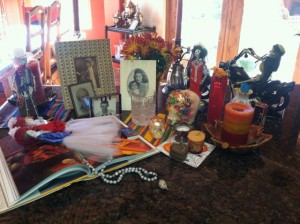
First, a bit of history about Halloween, All Saints Day and All Souls Day.
This time of year was known as Samhain by the Celts, meaning “summer’s end,” and named for the lord of death who allowed souls who had died to return to earth on Nov. 1. Some who had been harmed during their lives returned as ghosts, witches, goblins and elves and haunted their living persecutors. Cats were considered sacred because they had been humans and were changed into cats as a punishment for misdeeds. To protect against these scary spirits, on the eve of Samhain, people put out their hearth fires and the Druids (priests) built a huge bonfire of sacred oak, offering sacrifices of crops, animals and some say even humans, telling fortunes of coming year by divining the ashes and remains. People wore costumes of animal heads and skins. They took fire from bonfire to light their hearths again.
Local traditions developed from there. The Irish held a parade, following a leader dressed in a robe with a mask head of an animal, and begged for food. And, they started the jack-o’lantern. Someone named Jack couldn’t enter heaven because he was a miser, and couldn’t enter hell because he had played practical jokes on the devil; so he had to walk the earth with his lantern until Judgment Day.
Later, after the Roman conquest of Britain in AD 43, an autumn festival honored Pomona, the goddess of fruits and trees, connecting the apple with the celebrations, which were combined with Samhain.Christianity brought in All Saints Day on Nov. 1, honoring those who had entered heaven. Some of the pagan celebrations for All Hallows Eve remained, and took new forms.
During the Middle Ages the belief arose that it was the souls in purgatory who appeared on All Souls Day as witches, toads, goblins, etc. to people who had wronged them. This began the custom of feeding, honoring and appeasing the spirits. In addition, celebrations for the Feast of All Souls began in the early days of the church, for those departed who were in purgatory, hoping for entry into heaven. These celebrations have evolved in Mexico where graves are decorated on the morning of All Souls, Nov. 2. In Louisiana, relatives whitewash and clean tombstones and decorate them with garlands, wreaths, crosses and flowers.
If one of these traditions is part of your custom, then you have your own meaning associated with this time of year when the veils between worlds is thin. If not, what can we make of all this?
Well, I see it as an opportunity to make friends with death. First, we can remember our loved ones who have passed by creating our own ceremonies: telling stories, making altars, visiting their graves, or just by lighting a candle. We’re not only honoring them, we’re bringing the seen and unseen worlds closer together—not just for the spirits, but for ourselves.
Death is such a taboo subject in our American culture. Other cultures have fun with this time of year, and take it seriously at the same time. In Mexico, lots of cooking and preparations are happening right now, to honor those who live on in our hearts. Humor, whimsy, music and creativity are all part of the recognition of the part death plays in all of our lives.
In Tibet, it’s customary to begin preparing in midlife for one’s death. In yoga, we end our asana practice with savasana, the “corpse pose,” where we let go and allow our thoughts and our illusions of control to “die.” When we sleep we let our day “die,” and hopefully our troubles too. We enter the land of the dark, closing our eyes to the seen world, and entering another world we only partly see in dreams.
In the morning, we don’t remember all of where we’ve been, just as we don’t consciously remember being in the spirit world while we’re on earth. Day and night, dark and light, life and death are the yin and yang of our reality.
In the shamanic tradition, we say that we don’t want death “stalking” us, which happens when we live in fear of it. So we make friends with it, knowing that we are, at our essence, eternal. Though we may have fears of dying, we live “beyond” our fear, because we know that our spirit will journey on when it leaves the body. This time of year is an opportunity to imagine that journey and to celebrate those who are on it.
May you find that the thinness of the veil brings you blessings this year.
Tags: creative imagination, creativity and empowerment, Essence, inner landscape, spiritual practice
Posted in All Saints and All Souls Day, creative imagination, Creativity, death and new life, Dreams, Imagination, inner landscape, Making friends with death, shifting how we see | 23 Comments »
Tuesday, January 24th, 2012

Sometimes I cringe when I meet someone who asks me what I do. Answering either “life coach” or certainly “energy medicine practitioner” or for sure, “shamanic practitioner” can lead to immediate Eyes Glazing Over Syndrome.
Sometimes I do better when I tell a client story, but the best approach is asking questions. Like, “Have you ever had the feeling that something is missing in your life, even if you’ve read a lot of books, had therapy or tried meditating?” (At this point, I am checking for “Woo Woo, Checking Out Now Syndrome.)
But I persist. “Do you ever feel confused about your purpose? Or feel that your passion for your life has gone flat?”
Even though such complaints are vague, most of us have experienced them. Someone who says “Absolutely not” would probably not want life coaching or any personal development enrichment.
In reality, we have all experienced feelings that some might call burnout, and others might describe as being out of balance. Even someone who has never quite found that path, that center, usually can recognize these symptoms. The vocabulary isn’t important. And so…what?
I would call the feeling of being in our center, on our path, feeling passion and purpose “the pilot’s seat.” And I would say that the one who has taken the pilot’s seat in such moments must be the essential self. The one who is all about our life force, or soul.
Sometimes the essential self manages to take the pilot’s seat “by accident,” or really without our effort. In those moments we might call grace, we simply know and we simply are.
When you’ve been there, it’s painful to be dislodged from the pilot’s seat, or to have it commandeered by sub-personalities, or by the ego, who is not well-connected to essence.
Sometimes just the awareness of being off-center is enough to correct the situation. Other times, we need help. We need tools. Here are some to consider:
- Deep talk, soul sharing with a friend or advisor who listens well
- Traveling into invisible realms for guidance, through meditation, prayer, dreams or shamanic journeying—or my Sand Spirits Insight Cards!
- Any breathwork or meditation system that leads you back into your heart
- Asking the Great Mystery for help
- Work with changing old beliefs and releasing old patterns
If any of this resonates with you, I invite you to call me for a complementary phone consultation. Or if this has helped you remember your own tools, please add your comment!
Tags: Being, centering, centering techniques, consciousness, Essence, Flying, Flying metaphor, inner landscape, living today, managing change, meditation, perception, Photography, Sand Spirit Insight Cards, spiritual practice
Posted in bringing out your gifts, centering techniques, coaching, conscious evolution, consciousness, Dreams, Flying, happiness, healing, Imagination, inner landscape, meditation, mindfulness, Photography, returning to essence, Sand Spirit Insight Cards, seeing oneself, self-healing, shifting how we see, shifting paradigms, spiritual practices, Tools for seeing ourselves | No Comments »
Thursday, January 12th, 2012
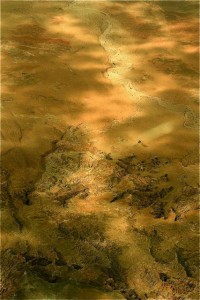
The world needs your genius. You have genius, you know. Every one of us does. Your genius is your “original medicine,” as Angeles Arrien put it. It is unique medicine. So if you keep it from the world, the world will never see it again.
Taking the pilot’s seat means bringing out your genius. It means remembering what Marianne Williamson reminded the world about our greatest fear: that we are really great. Playing small, she reminded us, serves no one.
When we ask the biggest part of us—the oldest, most essential, wisest part of us—to be pilot of our lives, we invite our genius to be seen and to be at work in our lives.
It’s strange, isn’t it, that this invitation seems to require courage from us. How could raising the level of our performance and bringing out our greatness be a fearsome thing? Who is it who says it’s scary?
I think it is the child within, the egoic one who is afraid of being exposed, afraid of attack, afraid of shame, failure, and afraid its worse suspicions about our real nature will be proven right. But what does the one within you who is capable of observing this voice say about those arguments?
My larger voice—my essential self—says they are illusions. She says they are the energy of fear incarnate. And not the kind of fear that serves as a valid warning. The kind of fear that cripples.
And so, if there is an inner wrestling match about who should climb into the pilot’s seat and run our lives, how do we deal with this small, fearful one who would sabotage our authentic power? I think we just name her. And then recognize her need for comfort. Hold her as we would any child. Let her know this is not her decision. Let her know we will not leave her behind.
And then, as therapist Terry Real says, peel her sticky fingers off the flight controls, move her over to the passenger seat, and climb in and begin flying.
There’s no time to do otherwise. The world needs your essential self right now.
Tags: consciousness, Essence, Flying, Flying metaphor, perception, Photography
Posted in authenticity, aviation, Being, bringing out your gifts, calling, conscious evolution, consciousness, creativity and empowerment, Flying, inner landscape, loving ourselves, Photography, returning to essence, seeing oneself, self image, self-healing, shifting how we see, shifting paradigms, Tools for seeing ourselves, women's empowerment | No Comments »
Tuesday, January 3rd, 2012
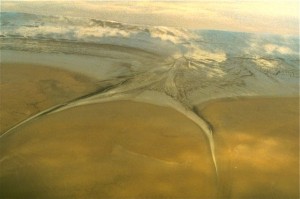
When I walk on the beautiful land in the Sutherland Valley, beneath the Catalina Mountains, the land reminds me that Mother Earth has a heartbeat, a rhythm. Being in nature attunes my body to her rhythm and reminds me of my own natural pace. So does meditation—it is a way of stopping to check in with the Source, and with my own body/mind, and re-calibrating.
I need to change my “attitude,”—an aviation term for the angle of the airplane– to pull the nose of my airplane up a bit and slow my speed.
When I think of the idea of slowing my pace, my “small mind” immediately panics at the thought. What will I miss? What will I not accomplish?
Fortunately my “larger mind” responds by asking, “Where are you going so fast? What is your destination or goal that is so crucial? Isn’t the journey the point?”
My small mind says nothing.
I remember Thich Nhat Hahn’s cautions about our pace, his advice about mindful walking and mindful eating and avoiding multi-tasking.
My small mind points out how many things I accomplish by multi-tasking. Is that really true? Recent research points out that our brains don’t operate at maximum efficiency when we do more than one thing at a time. Maybe we are sacrificing focus, intensity and depth of thought, excellence in problem-solving.
Perhaps I suffer from the aviator’s dreaded plague, “get-there-itis,” the disease that leads to unwise decisions like flying too late, or into bad weather, or when sick, or in conditions outside our expertise. If we crash, we might ask ourselves what was so important about that destination and how much time we really saved.
If I take time to gaze out the window, perhaps I’ll really see something like the scene in the photo of the water and cloud formations along the Sea of Cortez. What’s the hurry, really?
These are thoughts each of us must bring to consciousness as we pilot our way through a year that may challenge us to drop old patterns, to take responsibility for our own energy, to ask treasured family and friends to support us as responsible pilots who have taken the left seat. We may not be able to manage the strong winds of life, but we can manage ourselves.
What are your thoughts? Interact with us at Facebook.com/FlyingLessons!
Tags: Being, consciousness, Flying, Flying metaphor, inner peace, living today, managing change, meditation, musings, Nature and the soul, new life, own pace, Photography, spiritual practice, The Beauty Way
Posted in aviation, Being, coaching, conscious evolution, consciousness, Flying, happiness, healing, health, inner landscape, loving ourselves, managing change, meditation, mindfulness, new life, not doing, nourishing ourselves, Photography, returning to essence, seeing oneself, self-healing, shifting how we see, shifting paradigms, spiritual practices, The Beauty Path, Tools for seeing ourselves | No Comments »
Sunday, December 18th, 2011
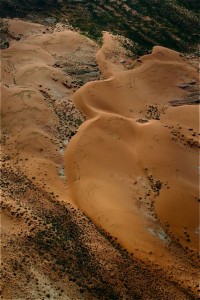
Holidays, despite the fun and joy and lights, can exacerbate the tensions within and between us. People are tired and expectations are high. Sometimes scenes we imagined would be warm and close present unexpected tension. When that happens, it can feel like our feet are stuck in the sand. Hard to move out of the situation or through it with much grace.
The old way would be to try to power through it. Summon the adrenaline. Fight back. Use mental or even physical force. We know where this has led in our personal and corporate lives–to wars of private and global dimensions. Surely it’s the season to something other than digging ourselves deeper.
In my new book, Flying Lessons: How to Be the Pilot of Your Own Life, I made the suggestion that we “rise to the occasion” by elevating our consciousness and finding a new, higher form of power.
Here are some practical suggestions, just in case you get a chance to practice! If you are triggered by someone and tempted to act out of the old kind of power, here’s an alternative formula:
1. Stop.
2. Breathe.
3. Call on your inner observer.
4. Ask that observer what the highest good could come out of this situation.
5. Ask how you might contribute to the highest good.
6. Review your options.
7. Make your powerful decision and then act from that place.
Now, how does the landscape look? Even that sand that once entrapped your feet might form lovely patterns from your position as the observer who can rise above the “gravity” of the challenge.
May you find true peace in your own heart during this holy season.
Tags: centering techniques, consciousness, Flying, Flying metaphor, inner landscape, inner peace, managing change, Photography, spiritual practice
Posted in aviation, conscious evolution, consciousness, Flying, inner landscape, managing change, nature as mirror, Photography, seeing oneself, shifting how we see, shifting paradigms, spiritual practices, Tools for seeing ourselves, Uncategorized | No Comments »
Tuesday, December 13th, 2011
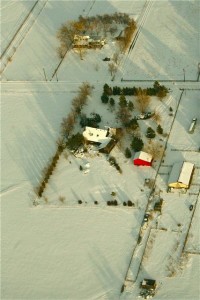
Just because you are reading this, I think you deserve congratulations for taking the time to read something just for you! No matter what your holiday traditions, this is a busy time!
Which is why I ended up reading my own Flying Lesson #2 over again. It’s Bring Enough Fuel for the Journey. Here are some excerpts and thoughts that struck me all over again as good advice for the season:
It’s food for thought that even though there’s no excuse for running out of fuel in the aviation world, we consider running on empty a normal part of our culture. In some circles there’s even a sort of nobility attached to being such a hard worker that everyone knows you never sleep. Even when people refer to someone as being a workaholic, rarely do they shake their heads in sadness or suggest a good treatment center. In many cases, overworking and overdoing is considered the means to success.
But when we have the ambition to fly, to rise above the gravity of our current situation, self-care becomes a crucial function. If we are going to push the envelope and move into a lofty territory where humans have only dreamed of operating we’ll have to pay attention to everything we’re doing and be conscious.
Being conscious is what piloting our lives is all about. And the proof of the pudding (especially the Christmas pudding) is how well we manage our own energy.
Have you ever stopped in the midst of rushing around to listen to a small voice saying something like, “What AM I DOING?”
This is the same voice who might ask other wise questions, like:
- How about a 15-20 minute power nap?
- What if I just took a hot bath instead of…
- Is the food I’m about to eat truly my premium fuel?
- What if I went to bed at 9 tonight?
- Do I really want to go to that party?
- Is this conversation nourishing me?
Never running out of fuel is about taking 100% responsibility for not burning out, not depleting yourself, and for knowing and cultivating the kinds of premium fuel that truly give you energy. Who else will do this for you?
Hmmm, maybe Santa. On the other hand, why not put this present right in the center of your being this minute:
Peace.
Joy.
Freedom to manage your own energy.
May you find the generous heart within that wants to give you these gifts this season.
In love and light,
Pam
Tags: consciousness, Flying, Flying metaphor, holidays, inner landscape, inner peace, living today, managing change, managing energy, managing stress, musings, new life, perception, Photography, spiritual practice, The Beauty Way, winter
Posted in aviation, conscious evolution, consciousness, creativity and empowerment, Flying, health, inner landscape, loving ourselves, new life, nourishing ourselves, Photography, seeing oneself, self-healing, shifting how we see, shifting paradigms, spiritual practices, Tools for seeing ourselves | No Comments »













